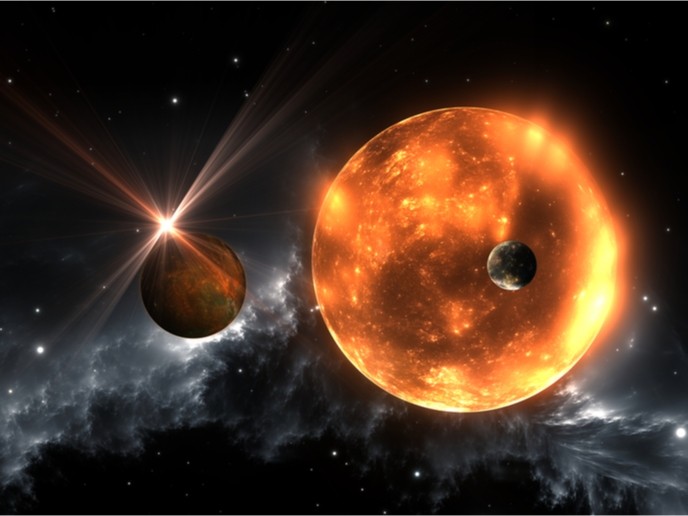New telescopes boost search for habitable worlds nearby cool stars
One of the most exciting discoveries in astronomy over the recent decades has been the identification of planets orbiting stars outside our solar system. So far, more than 4 000 exoplanets are known; the largest percentage are significantly larger than Earth, comparable with the dimensions of the gas giant Jupiter. While this may not reflect the real conditions in space, smaller planets are harder to detect. ExTrA is a new facility at the ESO’s La Silla Observatory in Chile, which is funded by the European Research Council and the French National Centre for Scientific Research. ExTrA’s telescopes will dramatically improve the detection and atmospheric characterisation of Earth-sized planets. They are specially aimed at planets that transit their star. During their motion, exoplanets cause a slight dip in the brightness of the star and cast its shadow on the telescopes. By measuring this periodic dimming of light, astronomers can infer the atmospheric physics and the bulk composition to determine what the planet is predominantly made of.
Observing in the near-infrared
The ExTrA facility is using technology that can boost the power of a traditional technique known as differential photometry (where the brightness of a star is assessed by comparing it to other stars in the image). Originally, it would be difficult to spot smaller, Earth-sized exoplanets using this method. However, researchers are developing novel methods to measure the brightness of red dwarfs in the near-infrared where they appear brighter. “Currently, there is a host of small telescopes that scan red dwarf stars for signs of exoplanets. Running similar surveys in the infrared would make observations of small and cool exoplanets much more efficient, as red dwarfs emit most of their light in the infrared,” says project coordinator Xavier Bonfils. As infrared cameras are relatively expensive, the ExTrA telescopes are using fibre optics. The light collected from the three telescopes is transmitted through optical fibres and run through an infrared detector. A robot positions the fibres in the right location to receive the light from stars. That is how ExTrA can record photometry in the infrared. Researchers have also taken into account that infrared radiation is strongly absorbed by water. This creates a large amount of systematic errors when observing a star at different air masses. To this end, the optical fibres of all three telescopes lead to the same spectrograph – an instrument that disperses starlight – so that the astronomers can select the spectral bands that are free of water transition lines.
Water – a key ingredient for life beyond Earth
ExTrA will look for transiting planets around cool stars in the hopes of detecting Earth-sized planets in their habitable zone. In this region around a star, a planet can have surface temperatures consistent with the presence of liquid water. The prime factor determining the planet temperature is its distance from the host star. “This should be the most sensitive survey for Earth-sized planets transiting bright nearby stars,” says Bonfils. “That means we expect to be able to identify and analyse dozens of exo-Earths, and by characterising their atmospheres, we will be able to identify those that are potentially habitable.”
Keywords
ExTrA, infrared, exoplanet, Earth-sized planet, red dwarf, optical fibres, habitable, ESO’s La Silla Observatory, spectrograph

